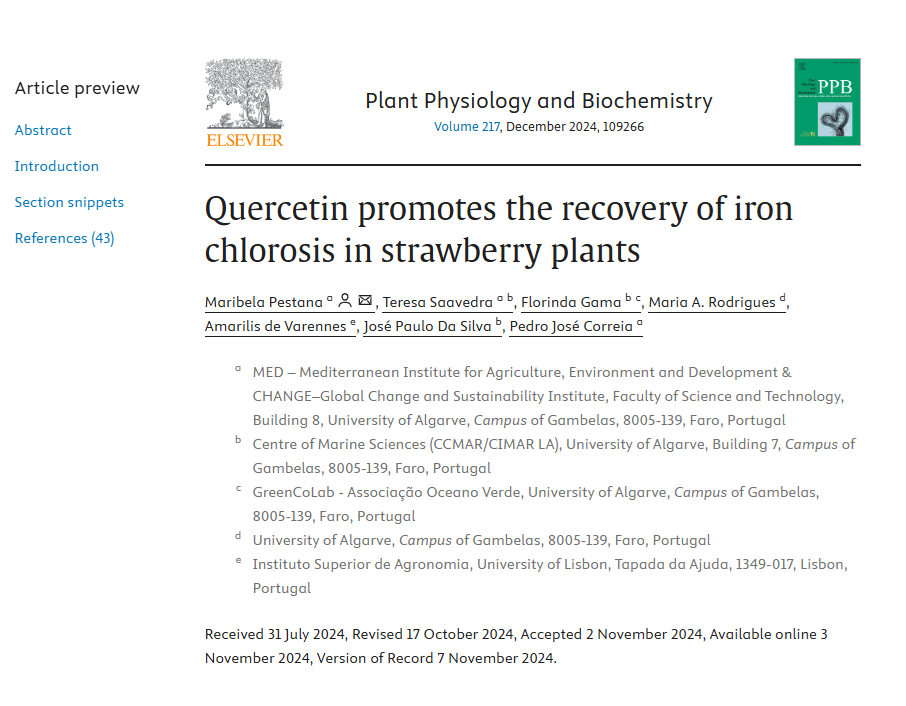

TITLE
Quercetin promotes the recovery of iron chlorosis in strawberry plants
JOURNAL
Plant Physiology and Biochemistry
AUTHORS
Maribela Pestana, Teresa Saavedra, Florinda Gama, Maria A. Rodrigues, Amarilis de Varennes, José Paulo Da Silva, Pedro José Correia
ABSTRACT
Iron (Fe) chlorosis is very common in plants cultivated in calcareous soils of the Mediterranean basin and is usually corrected by the application of Fe chelates to the soil, which can have a negative impact on the environment. The aim of this experiment was to assess the role of quercetin, a natural compound widely present in plants and known to bind Fe, in correcting Fe chlorosis when supplied in the Hoagland nutrient solution. In this context, strawberry plants were grown at different Fe concentrations, with 0 (Fe0), 1 (Fe1) and 5 (Fe5) μM of Fe in the nutrient solution, until the onset of clear Fe chlorosis symptoms. Subsequently, the recovery of Fe chlorosis was investigated through the addition of Fe and/or quercetin (Q) to nutrient solutions. Throughout the experiment, leaf chlorophyll (Chl) was estimated using the SPAD values. The root ferric chelate-reductase (FCR) activity was determined in the root apices, and the foliar Fe concentration was also quantified. At the end of the experiment, plants grown without Fe but supplemented with Fe1 plus quercetin [Fe0+(Fe1+Q)] recovered completely from Fe chlorosis and showed a Chl concentration (700–800 μmol m−2) in young leaves similar to that observed in control plants (Fe5). The remaining treatments exhibited lower Chl concentrations, with values ranging from 92.4 to 217.0 μmol of Chl per m2. FCR activity was approximately five-to six-fold higher in the Fe0+(Fe1+Q) treatment than in the Fe0 and Fe5 treatments. However, the plants that were consistently grown with Fe in the nutrient solution (Fe1 and Fe5) exhibited the highest Fe content in their leaves. The findings suggest that quercetin has the potential to function as an Fe complexing agent, thereby enhancing the recovery of strawberry plants with Fe deficiency.



